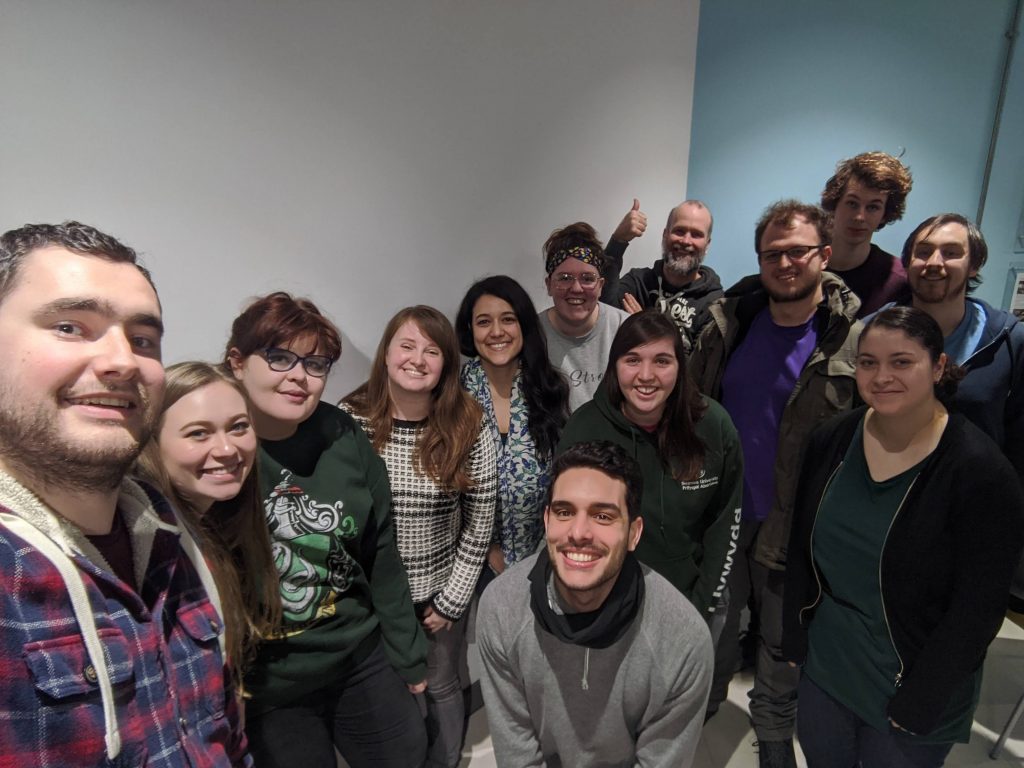OLCAP Workshop: Epigraphy – Christian Knoblauch
Last Saturday OLCAP organised its second skills workshop for 3rd Year and MA students. After tackling mapping in the first workshop (https://projects.swan.ac.uk/ancient-world/?p=1012), this time around we got stuck into epigraphy. Epigraphy is a broad field and refers to the study of inscriptions, but we wanted to focus on two practical skills: copying inscriptions on monuments in the field; and making publishable digital line-drawings of inscriptions.
Eleven hardy students set out for the cemetery in the grounds of St Paul’s Church at the top of Singleton Park for the first session on copying inscriptions in-situ. The church, built for the Vivian family and consecrated in 1850, has many gravestones from the second half of the 19th Century on its wilder northern side and it was here that we got to work.
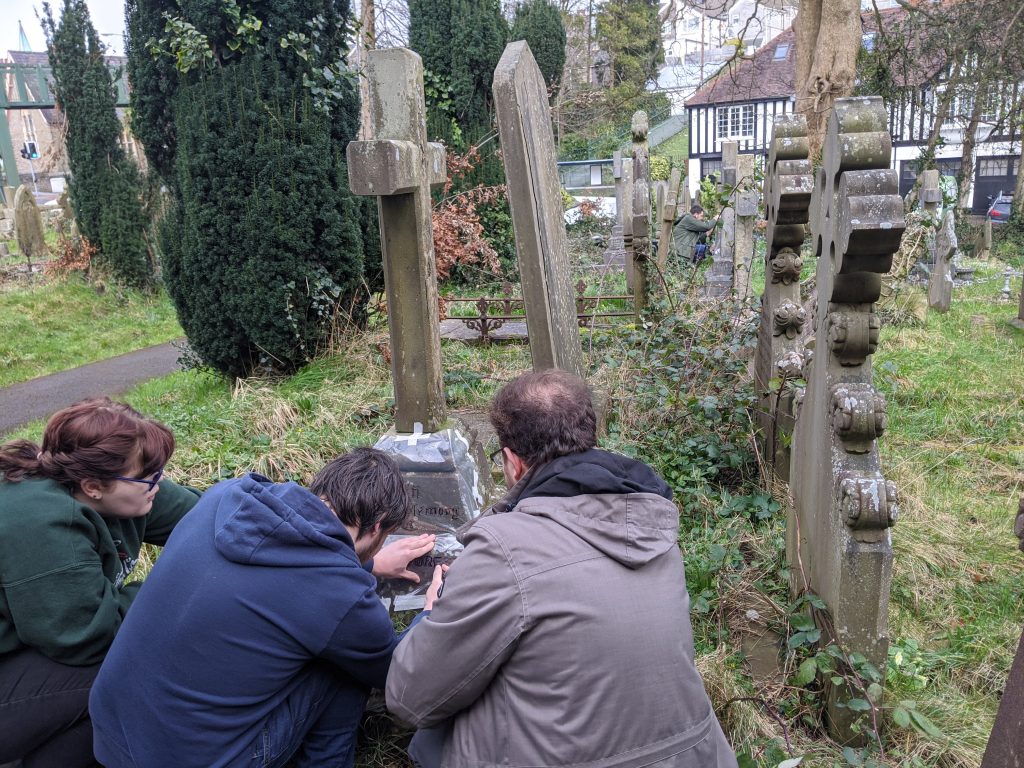
First up we combed the cemetery in small groups to find an inscription to copy. This was an authentic field experience as we had to think about finding a place where there was enough space to work, while respecting the graves and staying safe – some stones are slowly losing their battle against gravity. There are lots of different ways of copying inscriptions, including fully digitised methods (link to http://www.digital-epigraphy.com/) , but we opted for polythene sheets and waterproof sharpies. Like many choices in field work, this was a compromise. We factored in the weather conditions (rain, obviously), our budget (sleek), availability of materials (the polythene was sourced from a local gardening store), the shape of the monuments (flat-faced and vertical) and our concern not to damage anything.
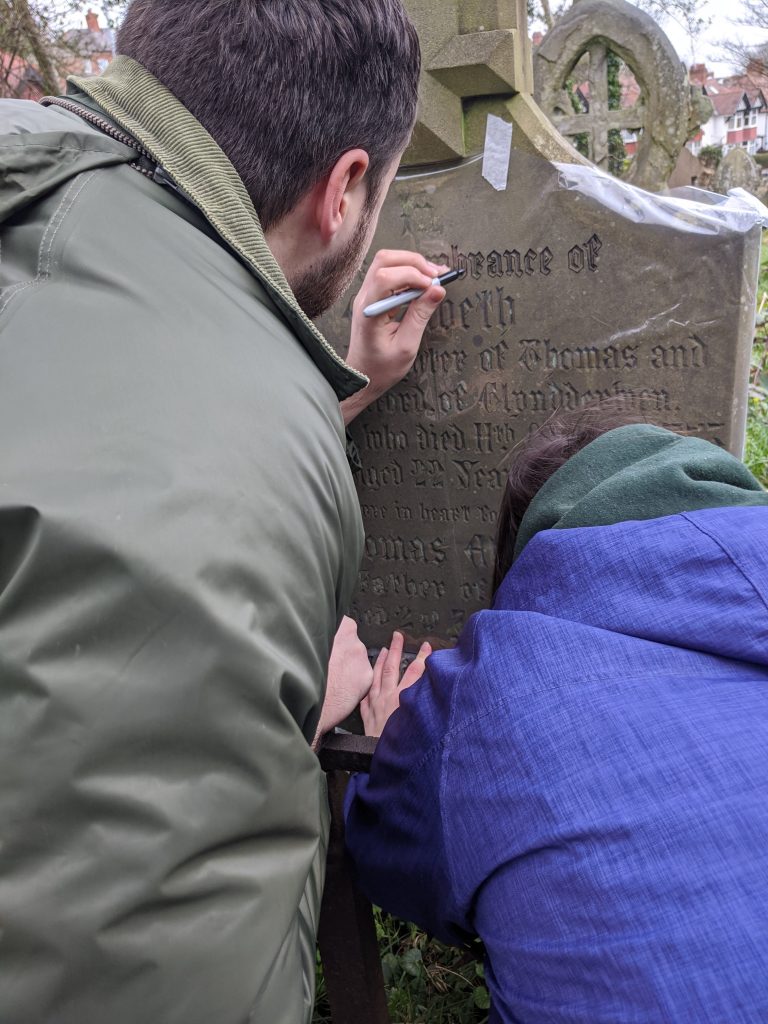
Standing at the rock-face is the best way to learn about the different challenges of copying inscriptions in the field. We thought about how to communicate the three dimensions of rock-cut inscriptions onto a two dimensional drawing surface, the difficulties of interpreting antique fonts and weathered signs in variable light and the importance of seeing the inscription as part of a monument. The results were simply fantastic for a first attempt!
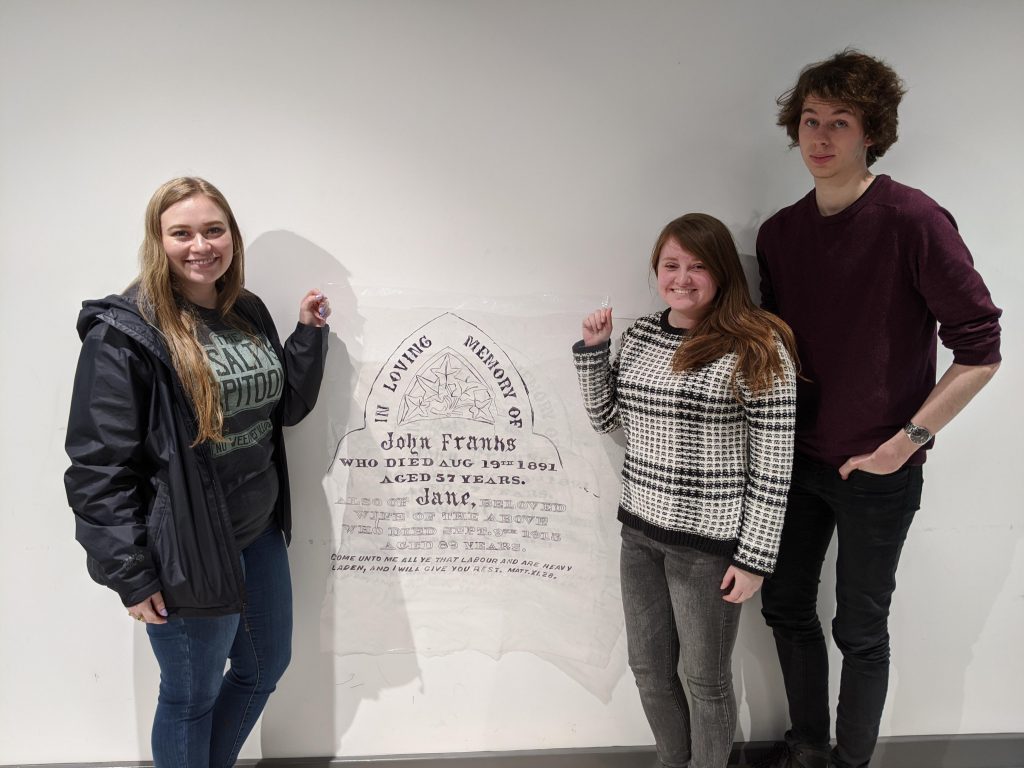
Drawing things also helps us see the familiar in new, unexpected ways and it was great to see how quickly and deeply the students engaged with the symbolism and texts of the tombstones as well as with the stories of the people remembered on them. There were also some interesting observations about craftsmanship and workshops.
Back at campus, Ersin gave an overview of different epigraphic methods including the old paper squeeze method (for a useful link click here: https://www.ias.edu/idea-tags/squeezes) before we got stuck into making line drawings using Adobe illustrator. All the students brought a laptop along and had downloaded trial versions of this subscription only software (there are freeware and cheaper one-off payment alternatives out there!) We gave an introduction to some of the basic functions of the digital drawing, how to organise layers, adjust line widths to indicate depth and directions of light, and most importantly, how to draw using a mouse pad ( simply join the dots).
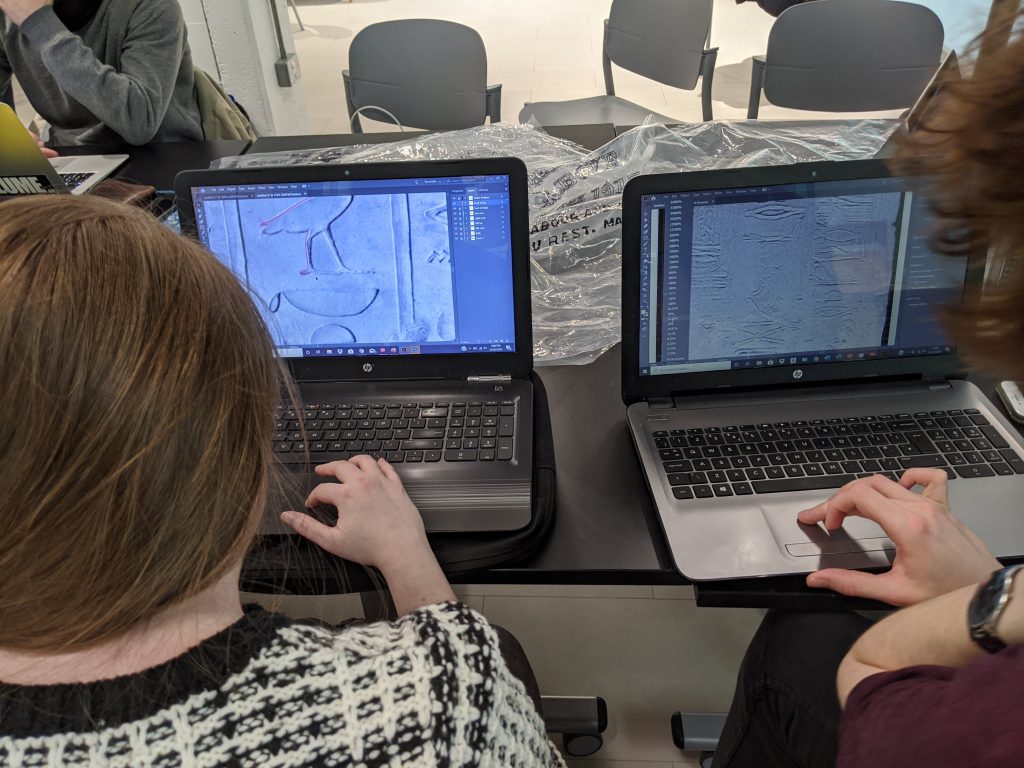
We then practiced our new skills by inking some hieroglyphic signs found on beautiful sunken relief fragments from the early Middle Kingdom tomb of Meketre now in the Metropolitan Museum of Art, New York (e.g. https://www.metmuseum.org/art/collection/search/562084). The results were great, and some of the drawings became real artworks in their own right.
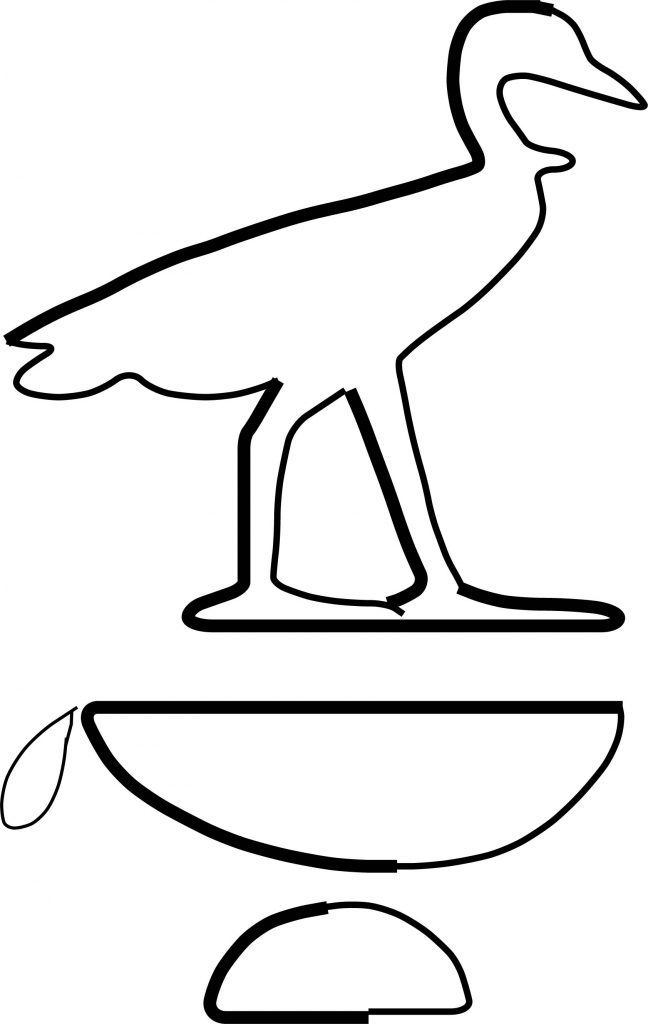
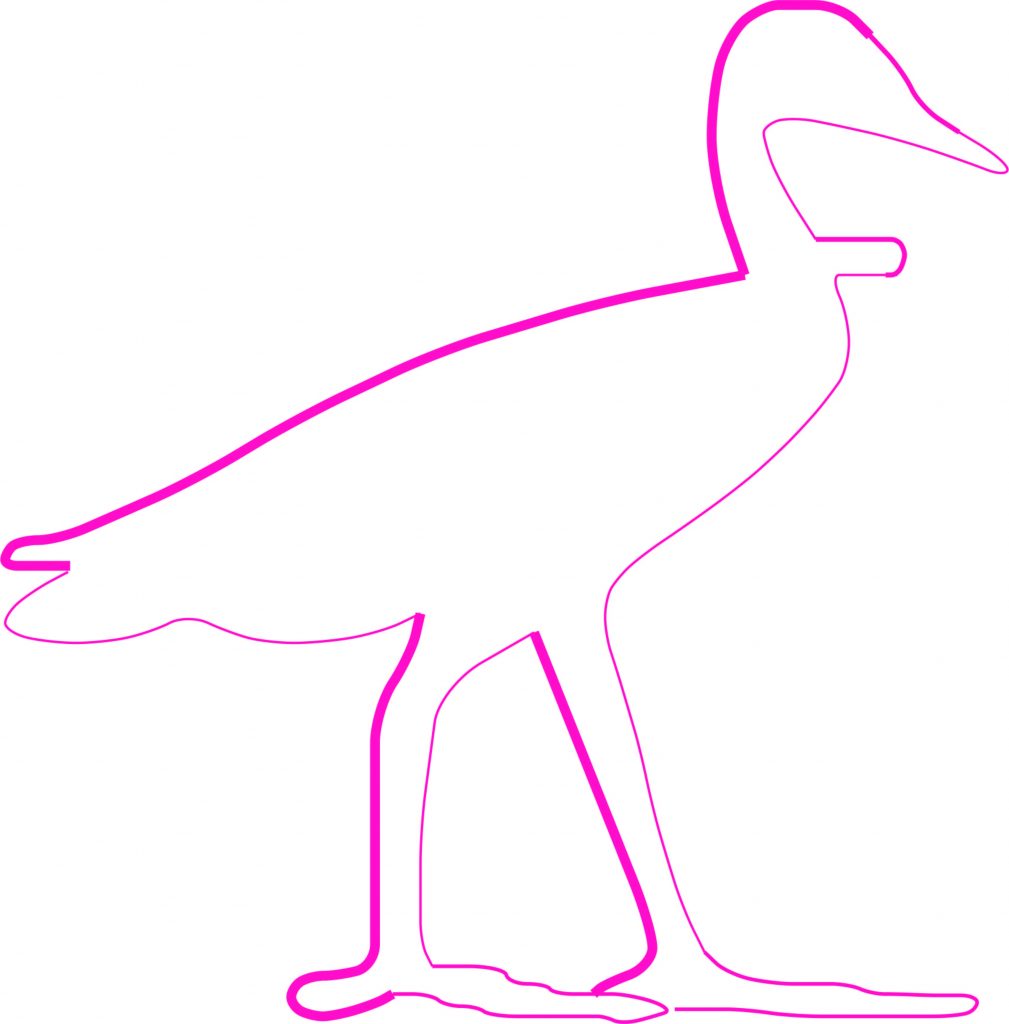
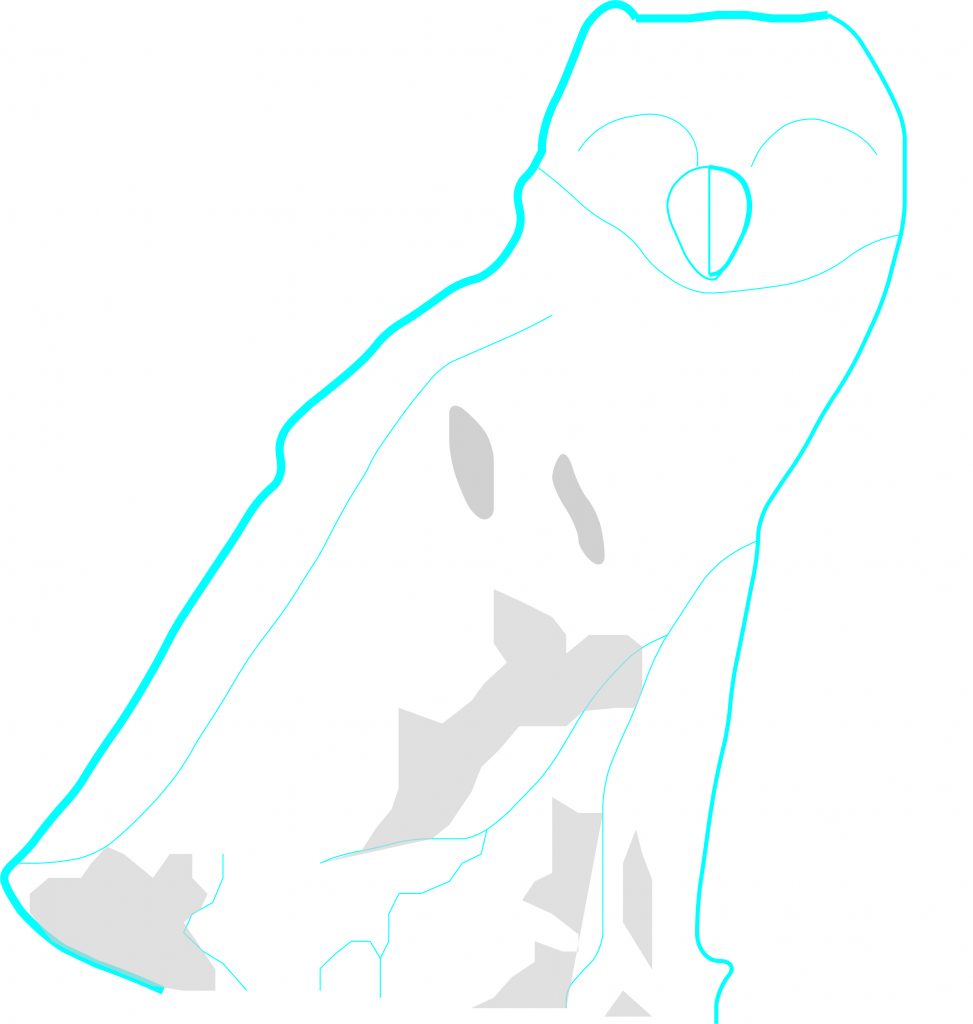
That was the last skills session for this academic year. If you have any ideas about what we should offer next year, or would like to find out more about OLCAP’s aims and activities in general, check out our website (https://www.swansea.ac.uk/arts-and-humanities/research/research-groups/olcap/) and do not hesitate to get in touch with us!
